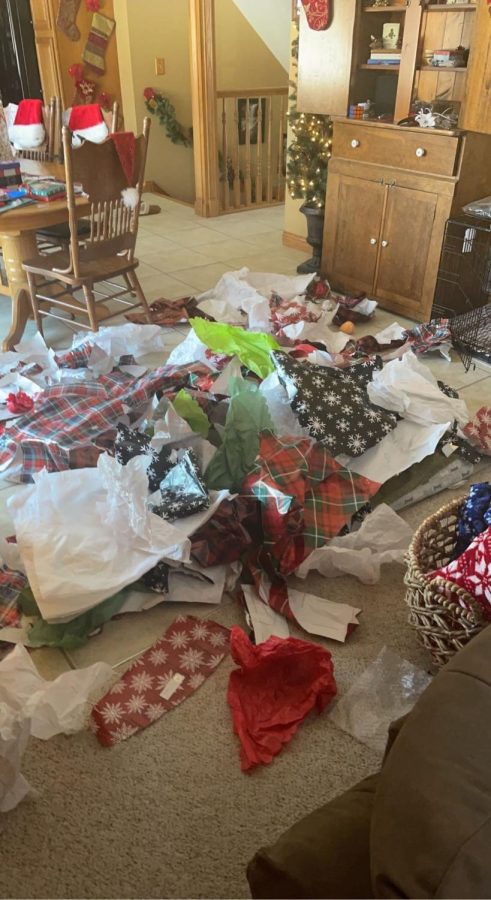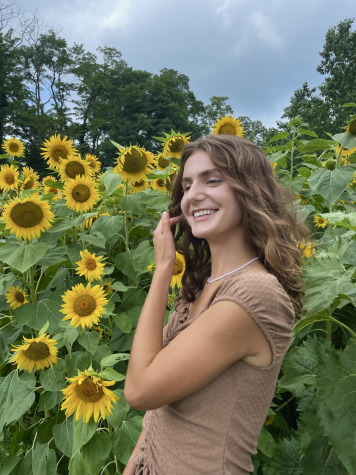Picture this: two Titanic ships, or 5,000 of the heaviest blue whales to exist or 313 average-sized trains are placed in a landfill every week between Thanksgiving and New Years Day.
If you’re thinking that’s nonsense, you’re wrong. According to the S.C. Department of Health and Environmental Control, there is an influx of 25-43% waste produced by households between Thanksgiving and the New Year. Nearly 1 million, and sometimes more, tons of waste is added to landfills each week during this time frame.
Leftover ribbons, thank you cards and shopping bags are thrown out each year during Christmas. While the action of wasting a gift or piece of food may seem small, it quickly adds up. Thrown in the pile alongside other people’s trash, it creates an even larger landfill in the U.S, burying the environment with damage.
Yet, it’s not only the trash in landfills that’s causing environmental problems. The tiny things people do during the holidays that you think shouldn’t matter, are the things that cause harm; driving to a family member’s house, using paper utensils when people come to visit, disposing uneaten food, using Christmas lights or even throwing away wrapping paper torment the earth.
Staying oblivious to the effect that consumer desire and influence has on the environment, people continue to harm their surroundings. However, there has been an increased awareness of how humans are damaging the environment, and some individuals have begun purchasing more sustainable products, or even doing something as simple as recycling.
This past Christmas, sophomore Sophia Foad purchased a few sustainable products. “Before Christmas, I learned about a bamboo brush that’s used for hair through TikTok. My old one was made almost completely out of plastic,” she said. “I’d never thought about how my hair products and other things that I use could lead to so much environmental damage.” Unfortunately, many people like Foad have lived blindly, unaware of how their actions affect the environment.
While this is a worldwide problem, a small change can ignite something big. The Clean Air Partnership is an organization dedicated to teaching about the importance of reducing air pollution emissions. Their message during the holidays reached many through social media platforms and their website. Some of their tips included: using LED Christmas lights, shopping locally and using biodegradable and recyclable materials.
At Pleasant Valley High School, the Environment Club is a similar replica to The Clean Air Partnership, but instead focuses on how to make a difference locally.
Senior Anagha Sudhindra is a strong lead in the club, and understands how the holidays affect the environment. “Major holidays have become so commercialized in the US to the point where their existence is essentially a business,” she stated. “Consumers begin to spend more, and alongside that spending leads to incredible amounts of plastic waste.” The lust for tangible things overrides the true meaning of the holidays, and pushes the environment out of view.
Sudhindra’s viewpoint extends not only to a national level, but a local one. “Lowering waste on a local scale might be very difficult since the idea of gift giving and spending around the holidays is a central theme throughout all nodes of pop culture,” she said. “Individuals might truly have to reflect on where and how they can shift resources towards a sustainable output if they are interested in upholding the tradition of gift giving.” Making a change may be difficult, but by simply supporting a green business or giving a sustainable present, a difference will be felt.
While many are educated about pollution and the problem it causes, understanding the effects of one’s actions can help slowly better the environment. Following environmental change social media accounts and websites are an easy way to learn more about what you can do, especially during Christmas.
Now, as the holiday season has come to an end, the remnants of its impact stay, and will continue to stay, unless change occurs.









